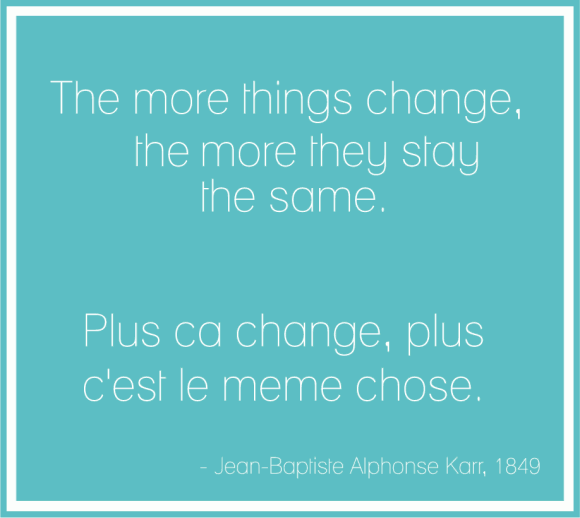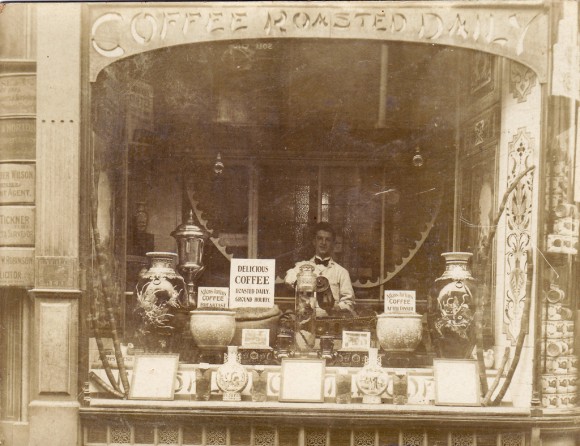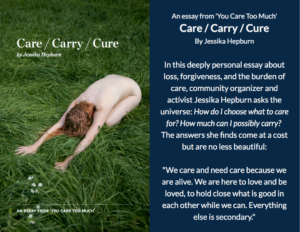
As we look to the past and our handmade heritage as makers, we have more tools than ever before to share our work with others. We are selling our wares as thriving business owners and sharing our makes on our blogs for our families and friends to see. Sharing our work is natural and throughout history people have been doing the same.
A mother creating outfits for her child, the young woman knitting herself a scarf, a child creating in woodworking class. The cabinet maker producing beautiful work of art to sell in his shop, the artist painting and drawing for homes, the local farmer cultivating his crops to sell down the market.
Making is in our blood, in our history.
So is marketing.
It might be easy to look to the latest technologies to promote your business. Google +, Twitter, Facebook, Linkedin, Quora, Klout, QR codes and so on but we can also learn a lot from the past.
1. Basket maker 2. Fabric Shop 3. Women crocheting
Our ancestors made things with their hands. Mostly out of necessity, sometimes out of enjoyment and love, sometimes for business. These artifacts can now be seen in museums all over the world yet at the time, these creations were the results of people’s livelihoods.
Without the sophisticated technology of today, craftsmen, tailors and seamstresses were able to grow successful businesses by simply connecting with others.
The focus was on providing fantastic customer service, cultivating relationships with consumers and being able to provide that extra knowledge about the products that the big box stores couldn’t provide. Contrast that to billboards and blog ads that we are inundated with everyday and you will see why the former was so successful.
We often talk about having conversations, and engaging customer service as if they are new concepts. Of course, they are not new, they have been around for years.
With the advent of social media technology like Twitter and Facebook, the tools for having these conversations and sharing or work has changed but the reasons for doing so have stayed the same. We want to feel connected to what we buy. Instead of being one of millions with the same item, we want to have something different, something meaningful or that we can pass down through generations.
That’s why we are seeking out independent retailers again. Small shops like in the old times where we can have a relationship with the person who makes and sells the goods.
Marketing has come full circle.
Back in the old days people did business with shops that remembered them, provided a great service or experience, went out of their way to add value to the sale through personalization.
Social media has brought us back to this place. It’s easier than ever before to seek out information directly from businesses. We are tired of being a faceless transaction and seek more from who we buy from.
After years of businesses hiding behind brands and throwing money at advertising, hiding away just won’t cut it anymore. Customers want to know who they are doing business with and they will quickly turn away from a brand without substance.
Even with the proliferation of new online social media tools it can be easy to forget that people haven’t really changed that much over the years and the same things that were important to them then, are as important to us now.
As Bridgett from Perideau Designs wrote in the last #omhg twitter chat:
“Even more big name companies and artists are coming from behind the logo and their identity is becoming their brand. #omhg”
Even companies like Coca Cola and Starbucks have realised the importance of going back to ground level and interacting with the very people who use their products. Your identity is your brand.
5 Ways you can use old school marketing in the modern age:
1. Personal Service
Remember your customers name and use it when emailing, talking on the phone or on social networks. Offer a personalized service and custom options. Remember past interactions and orders.
2. Customer Experience
Turn every contact into a memorable experience. People are often looking for more than a basic transaction. People remember when an experience is pleasurable or ghastly. Make it the former by being friendly,approachable and doing something unexpected.
3. Connect Emotionally
Use storytelling to connect emotionally with the customer. Stories help to bring your products to life, making them stand out from the competition. What were you inspired by? Why did you choose that fabric? You were taught needlework as a child by your Grandma? These vignettes are like gold dust to a consumer. You’re saying my product is special and here is why.
4. Exceed Customer Expectations
Go above and beyond what your customer expects from you. Try to add that little bit extra into the mix whether by being prompt with shipping their items out or going one step further to create the product of their dreams.
5. Product knowledge
Share how each product was made with your customers. Put up a video of your creative process or write FAQs on your website delving into your methods. Consumers are more likely to buy from you the more they know about the product. What is it for? Who is if for? How was it crafted? What features make it unique? It’s not just about handing over money in a faceless transaction (even online). Sharing product knowledge can create engagement between you and your customers.
N.B All photographs are vintage and found via Flickr’s Vintage Occupational Photographs group. Photographs are copyright of respective owners. Be sure to check out the group, there are some great photos!



